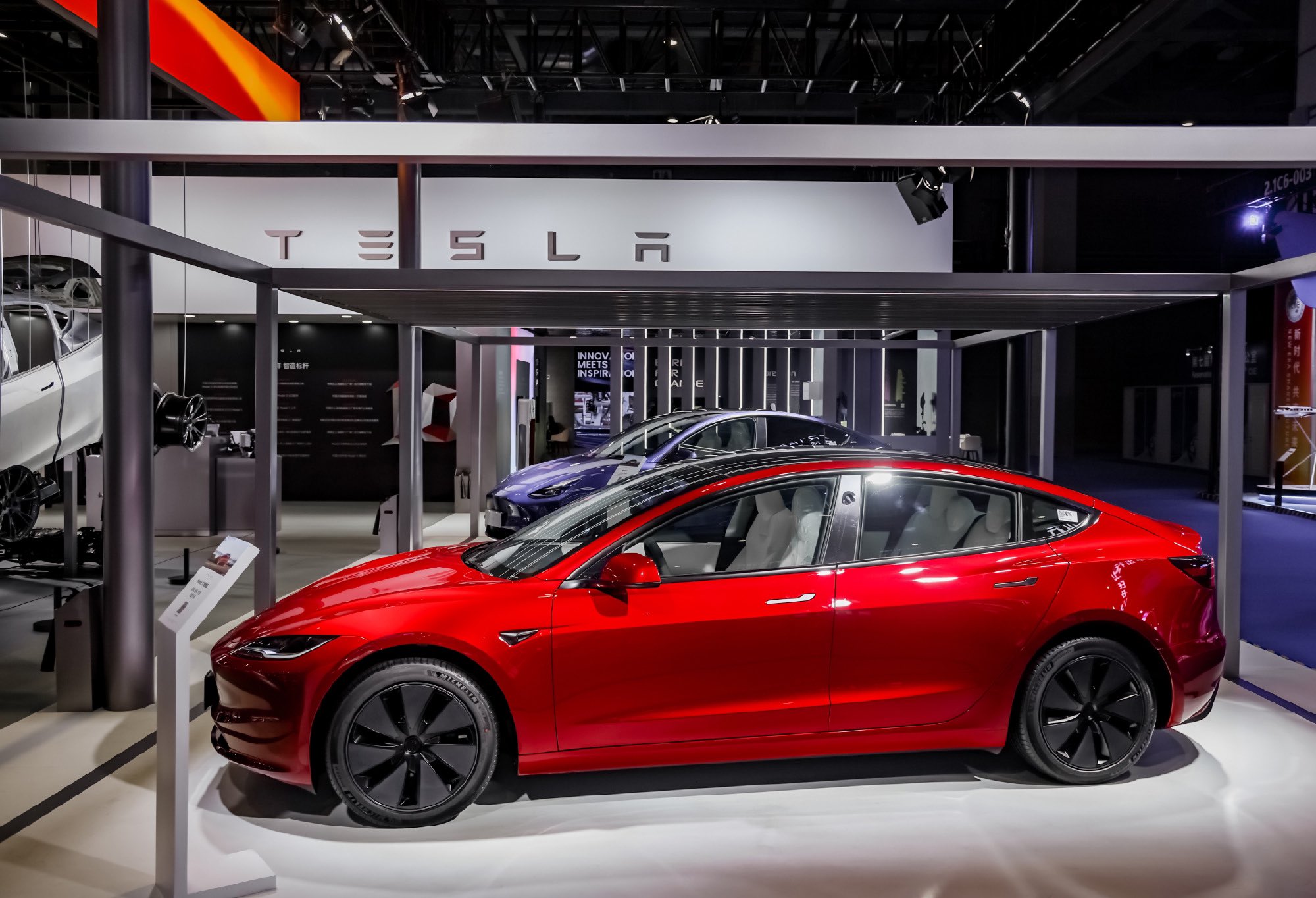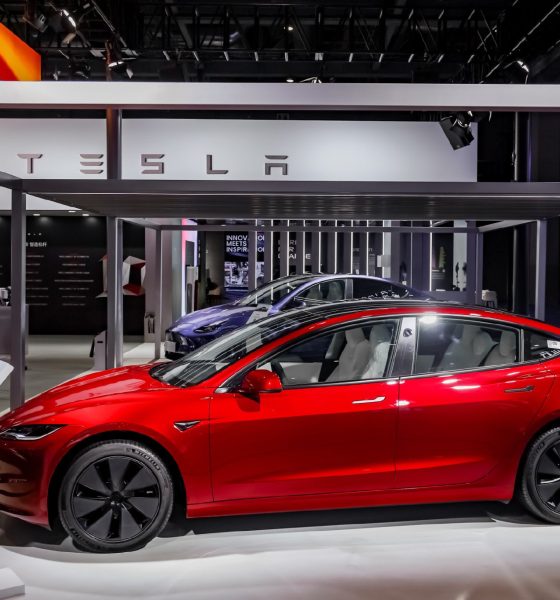The electric vehicle market in Europe seems poised to see some substantial changes in the coming months, with the European Commission telling automakers on Wednesday that China-based EV imports could see additional tariffs of up to 38% from next month. The additional duties would be implemented on top of the current 10% tariff placed on all EVs that are produced in China.
The European Commission’s announcement came following an anti-subsidy probe, as noted in an AFP News report. The tariffs given to China-based EVs would depend on the level of state subsidies that automakers receive. With this in mind, the European Commission has ordered a provisional hike of tariffs on several Chinese automakers.
These include BYD, which is poised to receive additional tariffs of 17.4%; Geely, which will receive 20%, and SAIC, which will receive a substantial 38.1% additional tariff. All other EV companies from China that cooperated with the European Commission’s probe are expected to see an average tariff of 21%, while electric vehicle makers that did not cooperate with the probe would see an additional 38.1% duty. Tesla cooperated in the EU’s probe, and thus, its Model 3 imports to the region are poised to receive an additional 21% tariff.
The much anticipated EU EV tariffs have been announced. In 2023 just shy of half a million China made EVs were sold in the EU making up nearly one-third of the total EVs bought. ? pic.twitter.com/x1G0zs3SfK— Iola Hughes (@RhoMoIola) June 12, 2024
“The Commission has provisionally concluded that the battery electric vehicles (BEV) value chain in China benefits from unfair subsidization, which is causing a threat of economic injury to EU BEV producers. Should discussions with Chinese authorities not lead to an effective solution, these provisional countervailing duties would be introduced,” the European Commission noted.
The additional tariffs are expected to be applied starting July 4, with full implementation being rolled out from November, as noted in a Reuters report. This is, at least, unless a qualified majority of EU states decide against the system. Some members of the European Union, such as Germany, have already spoken up against the additional tariffs.
As per transport minister Volker Wissing, a trade war and market isolation are not the way. “Cars must become cheaper through more competition, open markets, and significantly better business conditions in the EU, not through trade war and market isolation,” Wissing wrote in a post on X.
#Strafzölle der EU-Kommission treffen deutsche Unternehmen und ihre Spitzenprodukte. Durch mehr Wettbewerb, offene Märkte und erheblich bessere Standortbedingungen in der EU müssen Fahrzeuge preiswerter werden, nicht durch Handelskrieg und Marktabschottung.— Volker Wissing (@Wissing) June 12, 2024
China, for its part, has criticized the European Commission’s additional tariffs, stating that such a move would “harm Europe’s own interests.” China also claimed that the additional tariffs amount to protectionism. China foreign ministry spokesman Lin Jian noted that the country would take all necessary measures to protect its EV makers’ interests.
“This anti-subsidy investigation is a typical case of protectionism… It goes against the principles of market economy and international trade rules undermines China-EU economic and trade cooperation as well as the stability of the global automobile production and supply chain. China will take all necessary measures to firmly safeguard its legitimate rights and interests,” the foreign ministry spokesman noted.
Chinese Passenger Car Association (CPCA) Secretary General Cui Dongshu shared a tempered view on the matter. “The EU’s provisional tariffs come basically within our expectations, averaging around 20%, which won’t have much of an impact on the majority of Chinese firms. Those exporting China-made EVs that include Tesla, Geely and BYD still have huge potential for development in Europe in the future,” the CPCA official noted.
Don’t hesitate to contact us with news tips. Just send a message to simon@teslarati.com to give us a heads up.

News
Tesla China quietly posts Robotaxi-related job listing
Tesla China is currently seeking a Low Voltage Electrical Engineer to work on circuit board design for the company’s autonomous vehicles.

Tesla has posted a new job listing in Shanghai explicitly tied to its Robotaxi program, fueling speculation that the company is preparing to launch its dedicated autonomous ride-hailing service in China.
As noted in the listing, Tesla China is currently seeking a Low Voltage Electrical Engineer to work on circuit board design for the company’s autonomous vehicles.
Robotaxi-specific role
The listing, which was shared on social media platform X by industry watcher @tslaming, suggested that Tesla China is looking to fill the role urgently. The job listing itself specifically mentions that the person hired for the role will be working on the Low Voltage Hardware team, which would design the circuit boards that would serve as the nervous system of the Robotaxi.
Key tasks for the role, as indicated in the job listing, include collaboration with PCB layout, firmware, mechanical, program management, and validation teams, among other responsibilities. The role is based in Shanghai.
China Robotaxi launch
China represents a massive potential market for robotaxis, with its dense urban centers and supportive policies in select cities. Tesla has limited permission to roll out FSD in the country, though despite this, its vehicles have been hailed as among the best in the market when it comes to autonomous features. So far, at least, it appears that China supports Tesla’s FSD and Robotaxi rollout.
This was hinted at in November, when Tesla brought the Cybercab to the 8th China International Import Expo (CIIE) in Shanghai, marking the first time that the autonomous two-seater was brought to the Asia-Pacific region. The vehicle, despite not having a release date in China, received a significant amount of interest among the event’s attendees.
Elon Musk
Elon Musk and Tesla AI Director share insights after empty driver seat Robotaxi rides
The executives’ unoccupied tests hint at the rapid progress of Tesla’s unsupervised Robotaxi efforts.

Tesla CEO Elon Musk and AI Director Ashok Elluswamy celebrated Christmas Eve by sharing personal experiences with Robotaxi vehicles that had no safety monitor or occupant in the driver’s seat. Musk described the system’s “perfect driving” around Austin, while Elluswamy posted video from the back seat, calling it “an amazing experience.”
The executives’ unoccupied tests hint at the rapid progress of Tesla’s unsupervised Robotaxi efforts.
Elon and Ashok’s firsthand Robotaxi insights
Prior to Musk and the Tesla AI Director’s posts, sightings of unmanned Teslas navigating public roads were widely shared on social media. One such vehicle was spotted in Austin, Texas, which Elon Musk acknowleged by stating that “Testing is underway with no occupants in the car.”
Based on his Christmas Eve post, Musk seemed to have tested an unmanned Tesla himself. “A Tesla with no safety monitor in the car and me sitting in the passenger seat took me all around Austin on Sunday with perfect driving,” Musk wrote in his post.
Elluswamy responded with a 2-minute video showing himself in the rear of an unmanned Tesla. The video featured the vehicle’s empty front seats, as well as its smooth handling through real-world traffic. He captioned his video with the words, “It’s an amazing experience!”
Towards Unsupervised operations
During an xAI Hackathon earlier this month, Elon Musk mentioned that Tesla owed be removing Safety Monitors from its Robotaxis in Austin in just three weeks. “Unsupervised is pretty much solved at this point. So there will be Tesla Robotaxis operating in Austin with no one in them. Not even anyone in the passenger seat in about three weeks,” he said. Musk echoed similar estimates at the 2025 Annual Shareholder Meeting and the Q3 2025 earnings call.
Considering the insights that were posted Musk and Elluswamy, it does appear that Tesla is working hard towards operating its Robotaxis with no safety monitors. This is quite impressive considering that the service was launched just earlier this year.
Elon Musk
Starlink passes 9 million active customers just weeks after hitting 8 million
The milestone highlights the accelerating growth of Starlink, which has now been adding over 20,000 new users per day.

SpaceX’s Starlink satellite internet service has continued its rapid global expansion, surpassing 9 million active customers just weeks after crossing the 8 million mark.
The milestone highlights the accelerating growth of Starlink, which has now been adding over 20,000 new users per day.
9 million customers
In a post on X, SpaceX stated that Starlink now serves over 9 million active users across 155 countries, territories, and markets. The company reached 8 million customers in early November, meaning it added roughly 1 million subscribers in under seven weeks, or about 21,275 new users on average per day.
“Starlink is connecting more than 9M active customers with high-speed internet across 155 countries, territories, and many other markets,” Starlink wrote in a post on its official X account. SpaceX President Gwynne Shotwell also celebrated the milestone on X. “A huge thank you to all of our customers and congrats to the Starlink team for such an incredible product,” she wrote.
That growth rate reflects both rising demand for broadband in underserved regions and Starlink’s expanding satellite constellation, which now includes more than 9,000 low-Earth-orbit satellites designed to deliver high-speed, low-latency internet worldwide.
Starlink’s momentum
Starlink’s momentum has been building up. SpaceX reported 4.6 million Starlink customers in December 2024, followed by 7 million by August 2025, and 8 million customers in November. Independent data also suggests Starlink usage is rising sharply, with Cloudflare reporting that global web traffic from Starlink users more than doubled in 2025, as noted in an Insider report.
Starlink’s momentum is increasingly tied to SpaceX’s broader financial outlook. Elon Musk has said the satellite network is “by far” the company’s largest revenue driver, and reports suggest SpaceX may be positioning itself for an initial public offering as soon as next year, with valuations estimated as high as $1.5 trillion. Musk has also suggested in the past that Starlink could have its own IPO in the future.










